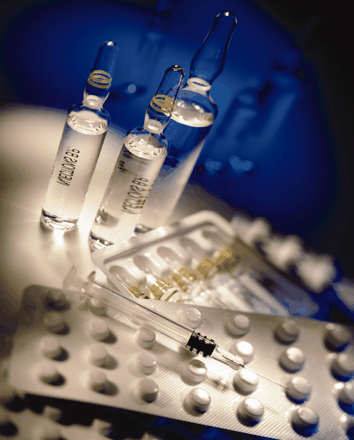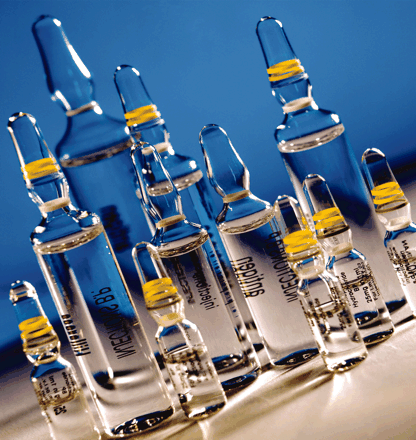Demystifying the New Drug Application
“The job isn’t finished till the paper work is done.” This maxim of automobile mechanics, shipping clerks, and TV repairmen applies also to those who develop new medicinal agents and wish to make them available to the public. In that case, the paper work is the New Drug Application (NDA), which must be submitted for review and approval by the Food and Drug Administration (FDA).
Every successful new drug development project culminates in an NDA. For many of the chemists, pharmacologists, toxicologists, pharmacists, and clinicians who have worked diligently on a drug development project, everything surrounding the NDA seems like a black box. They know only that there is a regulatory affairs staff handling this part of the project. Although this is the case in established pharmaceutical firms, many of the new start-up companies lack a regulatory affairs group. Their founders, often brilliant research scientists, have only a vague idea of the FDA’s requirements, and may react with disbelief when a consultant tries to educate them about the myriad details involved.
Indeed, regulatory affairs is a new profession, still largely unknown even in the research community. Its development as a separate discipline likely started when the Drug Amendments of 1962 made approval of new drugs contingent on proof of effectiveness as well as safety. These amendments also involved the FDA in the earliest stages of human testing of new drugs, through the Investigational New Drug Application (IND). To cope with the new paperwork requirements, firms sought out a man or woman from their R & D department who had a relatively broad scientific background and assigned that person to handle FDA matters. These early regulatory affairs people learned their profession on the job. As time passed, regulations multiplied and staffs increased in size, no longer consisting of one manager and a secretary. In 1976, a number of regulatory affairs people organized the Regulatory Affairs Professionals Society (RAPS). From an intimate discussion group, RAPS has grown into an international society of more than 8,000 members. It administers a qualifying examination, granting Regulatory Affairs Certification (RAC) to those who pass. The RAC designation indicates that the holder has attained a basic knowledge of the regulatory requirements for pharmaceuticals, biologics/biotech, and medical devices.
What Does “New Drug” Mean?
It’s important to have a clear perception of what a new drug is, and how a drug is determined to be “new.” The term is defined in the Federal Food, Drug, and Cosmetic Act, as amended in 1962 (1). Written in legalese, the Act takes two paragraphs, totaling 194 words, to define “new drug.” Stripping the jargon-laden definition down to its essentials, the term “new drug” means:
-
It is a human drug.
-
Its composition is not generally recognized, among qualified experts, as safe and effective under the conditions recommended in its labeling.
-
Even if it has been so recognized, if the drug has not been used to a material extent or for a material (i.e., significant) time it is still a “new drug.”
The second point of the definition requires the following clarification:
-
The experts referred to above must be “qualified by scientific training and experience to evaluate the safety and effectiveness of drugs.”
-
A drug’s safety and effectiveness can only be expressed in relation to the claims made in the sponsor’s labeling. No drug is safe or effective without further qualification.
It follows from the definition that any previously unknown substance, whether synthesized or isolated from a culture or other biological system, is unquestionably a “new drug.” With regard to known substances, gray areas exist, but these are not pertinent to this article.
First Step: The IND
The task of submitting paper work to the FDA begins when the sponsor of the new drug is ready to initiate the first clinical trial (Phase I). Before the proposed new drug may be administered to any human, an Investigational New Drug Application (IND) must be filed. The IND tells the FDA: 1) what the drug is, 2) how it is synthesized and prepared for human administration, 3) how its identity and purity are controlled, 4) what protocol will be followed in the proposed trial, 5) the qualifications of those conducting the trial and evaluating the results, 6) what information the sponsor is providing to the clinicians (investigator’s brochure), and 7) why the sponsor is convinced that the drug is safe enough to be tested in humans (pharmacology and toxicology). The regulations spell out just how, and in what order, the required information should be presented (2).
Once the IND has been filed, the Agency (FDA) has thirty days to review it and the sponsor may not start the study during that time. If FDA does not put a “hold” on the study or request modifications to the protocol within thirty days, then the study may proceed. The IND is a continuing document that grows throughout the clinical development process. As additional data are generated with respect to manufacturing and control procedures or to drug pharmacology and toxicology, these data are reported in amendments to the IND. Adverse experiences suffered by study subjects are reported, as well as any change in a clinical protocol. As drug development moves forward, protocols for Phase II and Phase III trials are submitted as part of the IND. Annual reports, summarizing all developments during the year, must also be submitted (2).
Assembling the NDA
When the new drug has successfully cleared all the hurdles of animal toxicity studies and human clinical trials, and when the chemistry, manufacturing, and control procedures have been finalized, the sponsoring firm is ready to prepare the New Drug Application (NDA). The regulations (3) state that “an application for a new chemical entity will generally contain an application form, an index, a summary, five or six technical sections, case report tabulations of patient data, case report forms, drug samples, and labeling....” A rundown of each of these items will provide a clear picture of the makeup of an NDA.
-
The application form (form FDA 356h), filled in by the sponsor, provides the FDA with certain basic information concerning the sponsor, the IND, and any drug master-files being referenced, and what enclosures and technical sections are being submitted.
-
The index (table of contents) is essential in view of the bulk and complexity of most NDAs.
-
The summary of the application must cover all aspects of the application, and should “synthesize the information into a well-structured and unified document.” Further, “the summary should be written at approximately the level of detail required for publication in...refereed scientific and medical journals” (4). The FDA regulations provide detail on what the summary should include, and they do not leave much scope for the writer’s originality. Besides its usefulness to FDA’s reviewers, the summary may be used to brief advisory committees and as the basis for a publicly available document after the NDA is approved.
-
The technical sections comprise the following:
-
Chemistry, Manufacturing, and Controls (CMC) section
This section must fully describe the composition of the drug substance (active ingredient), and its synthesis (or isolation) and purification, as well as applicable process controls, specifications, and analytical test methods. For the drug product––that is, the finished dosage form––all the ingredients and the quantitative composition must be listed, as well as the manufacturing and packaging processes, controls, specifications, and analytical test methods. An environmental impact assessment must be included in this section. Medicinal compounds are prepared by synthetic processes that typically employ toxic reagents and solvents, or are isolated from microbial cultures. Increasingly, these compounds are made in biotech processes involving tissue cultures and viruses. The sponsor must provide satisfactory means of safe disposal. The manufacture of dosage forms (e.g., pills or capsules) may also raise environmental questions, as the following example shows. In connection with a capsule product that contained a simple zinc salt, this author was questioned closely by the FDA about the handling of zinc-containing dust from the capsule-filling process.

-
Nonclinical Pharmacology and Toxicology Section
This section must describe the animal and in-vitro studies on the pharmacological actions and toxicological effects of the drug. Toxicology studies, tailored to the drug’s intended clinical uses, may include results and information on acute, subacute, and chronic toxicity; carcinogenicity; and impact on reproduction (teratogenesis) studies. This section also includes any absorption, distribution, metabolism and elimination (ADME) studies conducted in animals.
-
Human Pharmacokinetics and Bioavailability Section
For a new chemical entity (NCE), it is desirable to determine its bioavailability and pharmacokinetics from the dosage form, except that for certain dosage forms (e.g., iv solutions) 100% bioavailability may be assumed. For solid oral dosage forms (e.g., capsule or tablet) a bioequivalence study is often necessary to demonstrate that the formulation proposed for marketing is bioequivalent to whatever formulations may have been employed in early clinical trials.
-
Microbiology Section
This section is of major importance for anti-infective drugs and includes data on the biochemical basis of the drug’s action and its antimicrobial spectra; any known mechanisms of resistance to the drug; and clinical laboratory methods, such as sensitivity disks, needed for effective use of the drug. For sterile dosage forms of any drug, an extensive report on the validation of the sterilization process or the aseptic filling process is required.
-
Clinical Data Section
This section must contain a description and analysis of each clinical pharmacology study, controlled clinical study, and uncontrolled clinical study conducted in addition to integrated summaries of: 1) the data which demonstrate effectiveness for the proposed indications, 2) all available safety data, and 3) the benefits and risks.
-
Statistical section
This section presents the statistical evaluation of the clinical data relating to safety and effectiveness.
-
-
Labeling
A critical part of the NDA is the proposed labeling, which includes container labels, package insert, and any patient information leaflet. Actually, technical sections c, d, e, and f (above) are evaluated by the FDA to see if they support the indications and directions for use spelled out in the package insert. Sponsors often “push the envelope”––by wording the indications for the drug as widely as possible, and by downplaying the importance of the drug’s side effects––in their proposed labeling, and negotiations to finalize the labeling often occur when the NDA has been reviewed and deemed “approvable” by the Agency.
-
Case Report forms and tabulations
The sponsor must submit data tabulations from each Phase II and Phase III study and also the case study report form for every clinical trial patient who died or withdrew from the study because of an adverse event.
-
Patent Information
Information must be submitted regarding any patent held by the sponsor that covers the drug substance, formulation, and composition of the drug product, or method of use. Upon approval of the NDA, this information is published in the FDA’s Orange Book (known formally as Approved Drug Products with Therapeutic Equivalence Evaluations) and serves as a guide to firms wishing to develop generic copies of the innovator’s product.
-
Drug Samples
Samples of the new drug substance and drug dosage form are not submitted with the NDA, but are submitted upon the FDA’s request to the District Laboratory assigned to test them.
Regulations and Guidelines
The above is a brief (!) precis of the regulations covering the contents of an NDA. Even though the regulations are quite detailed (3) the FDA has deemed it necessary to issue “Guidelines” for the content and format of each major portion, including each technical section of an NDA. These Guidelines, in separate booklets for each section, supplement the regulations. For readers of Molecular Interventions, it may be of interest to look at the Guideline for the Nonclinical/Pharmacology/ Toxicology technical section (5). Here are some examples of the additional level of detail found in the Guideline:
-
When a test is performed on more than one animal species, data on the animals are to be presented in the following order: mouse, rat, hamster, other rodent(s), rabbit, dog, monkey, other non-rodent mammal(s), non-mammals.
-
Routes of administration must be in the following order: first, the route intended for human use, then, oral, IV, IP, SC, inhalation, topical, other in vivo, in-vitro.
-
The order of presentation of studies should be: pharmacology, acute toxicity, subchronic, chronic, carcinogenicity, special toxicity, reproduction, mutagenicity, ADME.
The other published Guidelines, mostly issued in 1987, are similarly detailed. In recent years, the FDA has been in discussions with regulatory authorities of the European Union (EU) and Japan, aiming to streamline and integrate the new drug registration requirements of the three parties. As a result, Tripartite Guidelines have been issued. The Tripartite Guideline, which may be used in place of the above-cited FDA Guideline, has the advantage of being available electronically; however, it comprises 118 pages (6), whereas the FDA’s 1987 Guideline is a modest booklet of twenty-seven pages. At least the order of presentation for animal species and routes of administration remains the same.

FDA Reviews the Application
At last the NDA is submitted: a work of many volumes and of many colors––the FDA prescribes the color of the folders for each section. The FDA’s Center for Drug Evaluation and Research (CDER) is divided into Divisions, each handling a therapeutic category (e.g., the Division of Anti-Infective Drug Products, or the Division of Peripheral and Central Nervous System Drug Products). The NDA is sent to the appropriate Division, which, because of the IND, already has considerable familiarity with the new drug.
Review of the NDA is done by an interdisciplinary group of scientists within the Division, including pharmacologists, physicians, statisticians, pharmacists, and chemists (7). The first step is a cursory yet complete scan of the application, to see if all the “pieces” mandated by the regulations are there. If the NDA is deemed incomplete at this stage, the FDA may refuse to file it (8). A “refusal to file” letter sends shock waves through a sponsor’s organization. The deficiency may be relatively minor, in which case the firm is able to make corrections quickly; or it may involve a major flaw, causing repercussions on Wall Street as well as in the corporate offices (e.g., ImClone’s Erbitux®). Once the filing hurdle is cleared, the substantive review of the NDA begins. The various sections are assigned to appropriate members of the review team who call the sponsor’s regulatory contact person for any desired clarification, additional data, or data tabulations. Usually there are questions that cannot be dealt with in this way; the FDA then issues deficiency letters, which must be answered with formal amendments to the NDA.
Besides the FDA’s intramural review of the NDA, there occur two important extramural events: 1) a series of inspections, and 2) an advisory committee meeting. The FDA usually sends investigators to one or more of the clinical trial sites or to the sponsor’s offices to inspect clinical trial records. This is a spot check to verify the integrity of the data contained in the NDA. This inspection shows that the patients really existed and gave informed consent, and that medical and laboratory records were kept properly. Other investigators, from one of FDA’s District Offices, are sent to inspect the plants where both the new active ingredient and dosage form are made. This inspection, termed the pre-approval inspection (PAI), may check production records, stability data, and equipment to be used for commercial-scale manufacture. It determines also whether the facilities involved are operating under current good manufacturing practices.
An FDA advisory committee is often convened to consider an NDA. Composed of physicians and other experts in the therapeutic area involved, and including a few nonscientists, the committee hears presentations from the FDA, the new product’s sponsor, and other interested parties at an open meeting. It considers the data and the benefit-to-risk ratio, and the committee’s decision gives the FDA outside backing for its own ultimate decision. The advisory committee serves also to make the public aware of the new drug and any issues surrounding it.
The FDA’s scheduling of an advisory committee meeting sets off an urgent spate of activity on the part of the NDA’s sponsor. A new informational document is prepared for distribution to the committee. Consultants are brought in to help strengthen the case for the new drug. Decisions are made as to who will speak for the firm, and who will be available on the bench to answer difficult questions. Rehearsals are held before a simulated committee, to prepare speaker(s) in delivering a smooth presentation, and to field foreseeable questions. On the day of the meeting, the feeling is very much like being on trial. A positive vote by the advisory committee feels like acquittal by a jury. By contrast, receiving the FDA’s approval letter is an exhilarating experience for those who have worked on the NDA.
In Conclusion
The NDA system in the United States is certainly cumbersome, and at times frustrating. As it has evolved during the past forty years, the NDA system has been criticized for delaying the availability of life-saving drugs, and for recklessly allowing unsafe drugs to be marketed. Nevertheless, this system has enabled the addition of thousands of drugs to the medical armamentarium. Many of these have been breakthroughs, and even “me too” products have some usefulness. At the same time, relatively few approved drugs have later had to be withdrawn. The benefit-to-failure ratio is overwhelmingly on the side of benefit, and the American system enjoys worldwide respect.
- © American Society for Pharmacology and Experimental Theraputics 2004

Stanley Scheindlin, DSc, RPh, holds graduate degrees in pharmaceutical chemistry and worked in drug product development and regulatory affairs. Now retired, he is a part-time consultant and writes freelance articles for pharmacyrelated specialty publications.



